#Battle of Saipan
Photo

US Marine First Sergeant Neil Shober feeding bananas to a native goat, Saipan, Mariana Islands, Jun 1944
203 notes
·
View notes
Text
1944-Battle of Saipan



American forces take Saipan, bringing the Japanese archipelago within range of B-29 raids, and causing the downfall of the Tojo government.
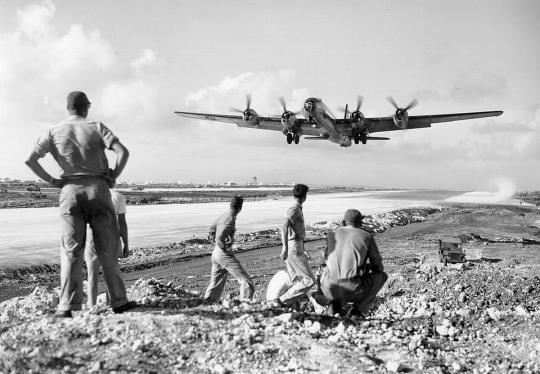
While the battle officially ended on 9 July, Japanese resistance still persisted with Captain Sakae Ōba and 46 other soldiers who survived with him during the last banzai charge.[23][24] After the battle, Oba and his soldiers led many civilians throughout the jungle of the island to escape capture by the Americans, while also conducting guerrilla-style attacks on pursuing forces. The Americans tried numerous times to hunt them down but failed due to their speed and stealth. In September 1944, the Marines began conducting patrols in the island's interior, searching for survivors who were raiding their camp for supplies.[24] Although some of the soldiers wanted to fight, Captain Ōba asserted that their primary concerns were to protect the civilians and to stay alive to continue the war. At one point, the Japanese soldiers and civilians were almost captured by the Americans as they hid in a clearing and ledges of a mountain, some were less than 20 feet (6.1 m) above the heads of the Marines, but the Americans failed to see them.[23] Oba's holdout lasted for over a year (approximately 16 months) before finally surrendering on 1 December 1945, three months after the official surrender of Japan.

Oba's resistance was so successful that it caused the reassignment of a commander. U.S. Marines gave Oba the nickname "The Fox."
2 notes
·
View notes
Photo
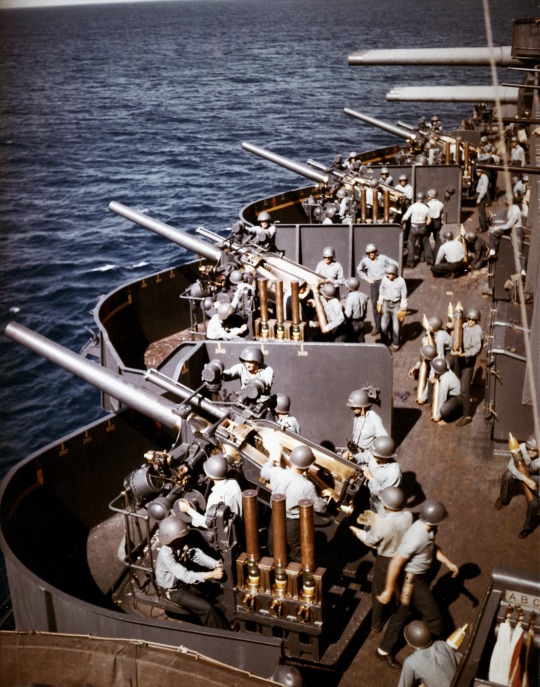
Les batteries de 127 mm du cuirassé USS New Mexico (BB-40) se préparent au bombardement de l'île de Saipan – 15 juin 1944
Photographe : Official U.S. Navy Photograph
©National Archives and Records Administration - 80-G-K-14162
#WWII#Guerre du Pacifique#Pacific War#Pacifique central#Campagne des îles Mariannes et Palaos#Mariana and Palau Islands campaign#Bataille de Saipan#Battle of Saipan#Marine américaine#US Navy#USN#Marine militaire#Military navy#Navire de guerre#Warship#Cuirassé#Battleship#Classe New Mexico#New Mexico class#USS New Mexico (BB-40)#USS New Mexico#BB-40#Artillerie de marine#Naval artillery#Saipan#Iles Mariannes#Mariana Islands#15/06/1944#06/1944#1944
19 notes
·
View notes
Photo
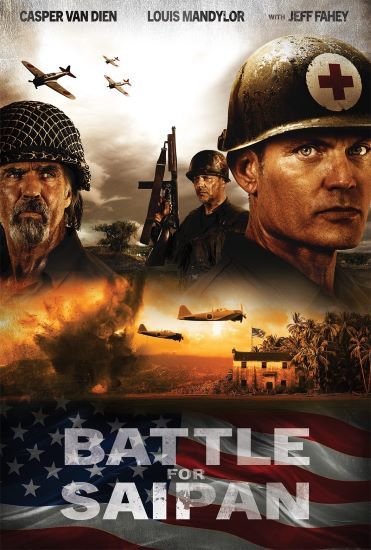
Battle for Saipan - Review
Based on a true story, a surgeon defends a hospital from Japanese forces during the World War II Battle for Saipan.
https://www.voicesfromthebalcony.com/2022/12/06/battle-for-saipan-2022-review/
0 notes
Text
Episode #1154 - Filmmaker Brandon Slagle
Interview with filmmaker Brandon Slagle ("Battle For Saipan"); music by Jarvis Smith featuring Rita Morar and Gabriela.
#BrandonSlagle #filmmaker #BattleforSaipan #JarvisSmith #RitaMorar #Gabriela #SidewalksEntertainment
Interview with filmmaker Brandon Slagle (“Battle For Saipan”); music by Jarvis Smith featuring Rita Morar and Gabriela.
Airdate: 11/25/2022 (KCRT)
SIDEWALKS east coast correspondent Darren Paltrowitz interviews filmmaker Brandon Slagle about going from being a heavy metal vocalist to actor and now director of films, including his latest feature, “Battle for Saipan.” Plus, we have music by…

View On WordPress
#2022#Battle for Saipan#Brandon Slagle#episode#episode 1154#filmmaker#Gabriela#Jarvis Smith#Most Wanted#Rita Morar#Save The World
0 notes
Note
More history!!! I apologize in advanced this will be a touch long. Lucifer wants to catch up on everything he's missed and goes down a rabbit hole, and banks a hard right and just goes off looking at duck stuff that is loosely equated to other historical events.
Now, for some history. The totally not over-embellished "Devil Duck" from WWII, Pacific Theater. Where US Marines "won a raffle In New Zealand" and the prize was a duck (and totally totally didn't win a duck in a drunken gambling session). The winner's name was Francis "Pappy" Fagan if you'd like to know who the lucky guy was. So, the duck is now a Marine cause... of course it is... and because this is the marines- they make the duck into a drinking buddy and the duck becomes fond of beer.
The duck becomes the unit's mascot and is given the name "Sgt. Siwash".
So they go off to war and engage in the battle of Tarawa. And in totally believable fashion the duck storms the beach and engages in solo combat with a Japanese Rooster sustaining multiple pecks to the head, repel the enemy rooster. Sgt. Siwash refused medical aid until all other soldiers are tended too first. As ya do... cause ducks are noble AF creatures like that... Yup... totally...
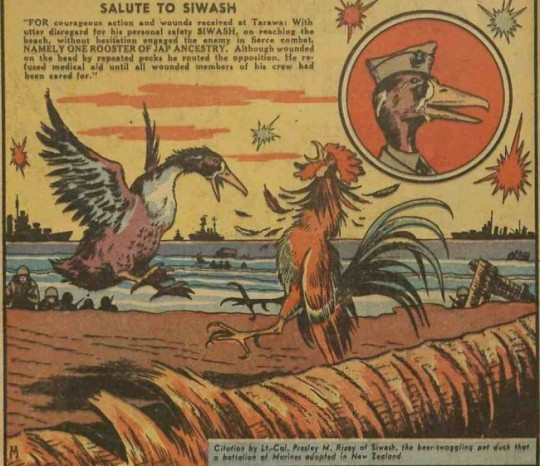
The second notable engagement for this unit is the battle of Saipan (aka The D-Day of the Pacific), but the enemy poultry refused to engage Sgt. Siwash in that battle so the duck could sit that one out.
Well Lucifer takes this to the bar and Lucifer is all excited about a war-hero duck. Before Husker, or, anyone for that matter can correct Lucifer on this. Alastor is there shaking his head no, suppressing laughter the whole time.
For one- it's funnier to just let this play out to whatever conclusion it comes to.
And for two- Alastor was the one that told Lucifer about this. Alastor got the story from a Marine that was on the unit venting about the bull-shittery the upper ranks got into to spin this tale to the public one drunken night ages ago in a bar. He tucked the information into his pocket for a rainy day. And baby, it's raining cats and dogs and Lucifer was RIGHT THERE.
😭
#hazbin hotel#radioapple#appleradio#lucifer morningstar#radio apple#apple radio#alastor#nunalastor asks#headcanon
63 notes
·
View notes
Text
Well, I guess listening to first-person accounts from the Pacific theatre of WWII is one way to traumatize myself. Obvious content warning.
Every Island landing for the Americans and Japanese was like D-day but worse. And it just got worse the closer Americans came to the Japanese home islands. And the way the Imperial army just threw themselves into death, continuing to kill Americans until the last second, soldiers sometimes being chained to their machine gun nests, while involving the civilians in this, might have been the worst of it all. Some men had to be evacuated from the battlefields because their minds just broke. Some of this shit is just so difficult to grasp.
One soldier (named John Garcia) recalled his traumatic experience from Okinawa, and it just shows the psychological wounds this conflict caused:
We buried General Ushijima and his men inside a cave. This was the worst part of the war which I did not like about Okinawa. They were hiding in caves all the time. Women, children, soldiers. We get up on a cliff and lower down barrels of gasoline and then shoot at it. It would explode and just bury them to death.
I personally shot one Japanese woman because she was coming across a field at night. We kept dropping leaflets not to cross the field at night because we couldn't tell if they were soldiers. We would set up a perimeter. Anything in front, we'd shoot at it. This one night I shot, and when it came daylight there was a woman there, and a baby tied to her back. The bullet had gone through her and out the baby's back. That still bothers me. That haunts me. I still feel I committed murder. You see a figure in the dark, it's stooped over. You don't know if it's a soldier or a civilian.
I was drinking about a fifth and a half of Whisky every day. Sometimes homemade, sometimes what I could buy. It was the only way I could kill. I had friends who were Japanese. And I kept thinking every time I pulled the trigger on a man or pushed a flame thrower down into a hole: What is this person's family gonna say when he does not come back? He's got a wife, he's got children, somebody.
Oh, I still lose nights of sleep because of that woman I shot. I still lose a lot of sleep. I still dream about her. I dreamed about it perhaps two weeks ago.
And on the other side, you have entire families being commanded to take their own lives. Under the fear that the Americans would do terrible things to them, some blew themselves up with grenades, some took poison, or used blades or ropes. And when neither worked or was available, they would assign one family member to beat the rest to death with rocks or sticks. Often these chosen were the only survivors of these mass killings. It was all pure madness. Mind-boggling. All the while propaganda was blasted to the Japanese civilians and soldiers in fluent Japanese from boats, promising them their lives, safety, food and medicine.
Stuff like this happened every day in the Pacific, on every island. From the jungles of New Guinea to the caves of Okinawa, and islands nobody has ever heard of.
And the most insane thing is that, during all this time, the Japanese leadership knew Japan was losing the war as early as the Battle of Midway.
I think these stories give context to every decision made on that side of the war, including the fire bombings and the A-bombs. I sometimes think about how the pilots felt when they dropped Little Boy and Fat Man, but I feel like I won't ever understand their mindset as a person who has not witnessed the fanaticism, determination, and madness that occurred during the Island hoppings.
In an angry letter, the mother of a soldier on Okinawa asks:
Why haven't reinforcements reached those boys on Okinawa? Why must the same troops fight for 45 days? Why only six divisions in the first place? Why must every battle in the Pacific be bloody? It was bloody Tarawa, bloody Saipan, bloody Peleliu, bloody Leyte, bloody Iwo Jima, bloody Okinawa, bloody Mindanao, all of three divisions there, bloody Luzon, not finished, and it will be bloody Borneo. Doesn't it ever enter anyone's mind that we are paying a needles too high a price in human blood in the Pacific?
Here in Europe, I don't think this side of the war gets enough attention in the WW2 canon.
18 notes
·
View notes
Text
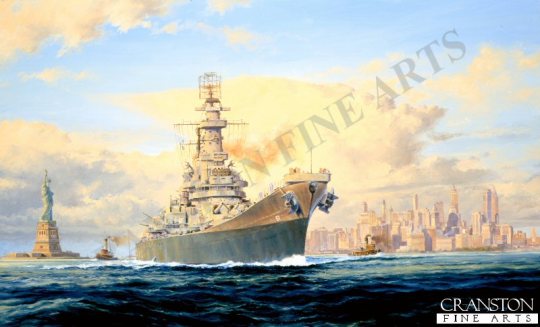
"USS Iowa leaving New York" by Anthony Saunders: link
USS Iowa (BB-61) "was commissioned in February 1943 at the New York Navy yard. Her first mission was to the North Atlantic in August 1943 to neutralise the threat of the German Battleship Tirpitz. By early 1944 she joined the Pacific fleet taking part in many of the major battles including Saipan, Leyte Gulf and Okinawa. She was re-commissioned in 1951 for the Korean war and again in April 1984."
#USS Iowa (BB-61)#USS Iowa#Iowa Class#Battleship#Warship#Ship#New York City#New York#East Coast#United States Navy#U.S. Navy#US Navy#USN#Navy#World War II#World War 2#WWII#WW2#WWII History#History#August#1943#painting#my post
20 notes
·
View notes
Photo

W Eugene Smith US Soldier During the Battle of Saipan 1944
58 notes
·
View notes
Photo
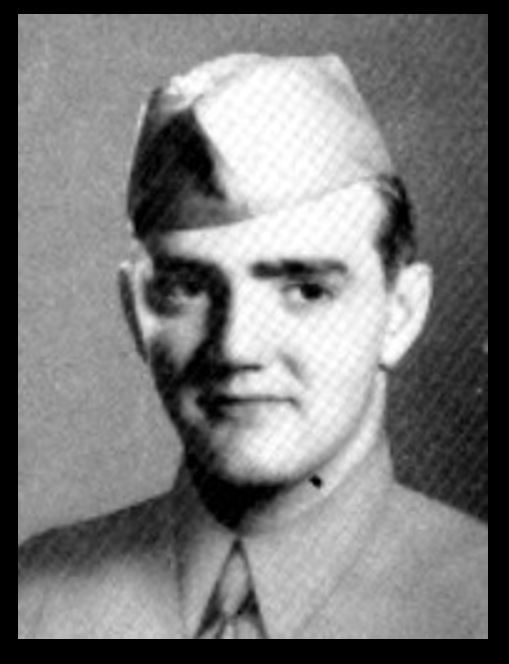
Medal of Honor Monday: Thomas A. Baker
On this day in 1944, a hero engages in an action that would earn him the Medal of Honor. You won't believe what Private Thomas A. Baker accomplished with only eight bullets during the World War II Battle of Saipan.
That battle was just one of several bloody battles fought in the Pacific in 1944. The Japanese were losing, but they refused to surrender. Finally, nearly a month into the battle, they threw everything they had at the Americans still on the island: Thousands of Japanese soldiers would make one last banzai charge.
Baker performed several acts of heroism during the month-long battle—but his final brave self-sacrifice came during that final banzai attack.
The story continues here: https://www.taraross.com/post/tdih-thomas-baker-moh
#tdih#otd#this day in history#history#medal of honor monday#medal of honor#heroes#world war ii#greatest generation#sharethehistory
21 notes
·
View notes
Text

1944 06 20 Off to the Turkey Shoot - Stan Stokes
At the time of the attack of Pearl Harbor the Japanese had superior aircraft and plenty of experienced pilots fresh from combat in China. By 1944 the roles were reversed. Anxious to commence B-29 bombing missions against the Japanese homeland Rear Admiral Marc Mitschers Task Force 58 was given the assignment of supporting the recapture of the Marianas. This proved to be the last major carrier battle of World War II. On June 11, 1944 large formations of Hellcats were dispatched to lure Japanese land-based fighters into combat. Enough Japanese fighters were destroyed to allow the Fifth Fleet to land 140,000 troops on Saipan and Guam on June 15th. Also on June 15th the Japanese main fleet joined up with its mobile fleet about 300-400 miles from Task Force 58. Vice Admiral Ozawa detached a force to use as bait to lure the Americans within range of the main fleet. His bait not taken, on June 19th Ozawa launched three air strikes with about 250 aircraft. The relatively inexperienced Japanese pilots now flying technically inferior aircraft were decimated by the Grumman Hellcats of Task Force 58. By days end Ozawa had lost 218 aircraft, and while unprotected his fleet had been attacked by American submarines resulting in the sinking of two of his carriers. Late in the afternoon of June 20th American Hellcats, Helldivers, and Avengers were launched at Ozawas fleet, resulting in the loss of one more carrier and severe damage to another two. As his airwings returned after dark Admiral Mitscher ordered his fleet to light-up, which enabled many of the American aircraft to return safely. About a third of the planes were forced to ditch with the loss of thirteen crewman. The Grumman F6F-5 Hellcat pictured, became the Navys primary carrier borne fighter plane during World War II. Over 12,000 Hellcats were produced, and the Hellcat was credited with 4,947 of the 6,477 kills of enemy planes downed by carrier pilots during the War. The Hellcat had a top speed of 375 MPH, a range of 1,089 miles and was armed with six machine guns. The aircraft was powered by an 18-cylinder Pratt and Whitney, air-cooled, radial engine which generated 2,000 horsepower. As depicted by Stokes is the aircraft of Squadron Commander David McCampbell of the USS Essex. McCampbell is the highest scoring US Naval aviator of all time.
27 notes
·
View notes
Text

U.S. Navy Douglas SBD-5 Dauntless dive bombers of Bombing Squadron 16 (VB-16) from the aircraft carrier USS Lexington (CV-16), fly over the invasion fleet off Saipan, on "D-Day", 15 June 1944
146 notes
·
View notes
Text
1944-Banzai charge in Saipan


Largest Banzai charge of the Pacific War at the Battle of Saipan.

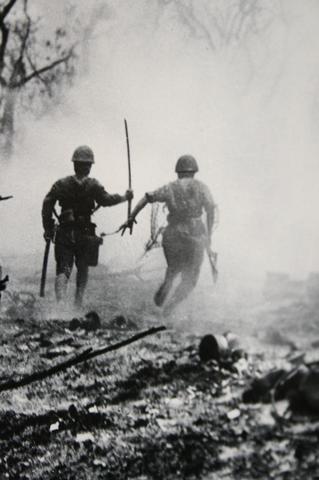
By 6 July, the Japanese had nowhere to retreat. Saitō made plans for a final suicidal banzai charge. On the fate of the remaining civilians on the island, Saito said, "There is no longer any distinction between civilians and troops. It would be better for them to join in the attack with bamboo spears than be captured.




At dawn of 7 July, with a group of 12 men carrying a red flag in the lead, the remaining able-bodied troops — about 4,000 men — charged forward in the final attack. Behind them came the wounded, with bandaged heads, crutches, and barely armed. The Japanese surged over the American front lines, engaging both Army and Marine units. The 1st and 2nd Battalions of the 105th Infantry Regiment were almost destroyed, losing well over 650 killed and wounded. The two battalions fought back, as did the Headquarters Company, 105th Infantry, and supply elements of 3rd Battalion, 10th Marine Artillery Regiment, resulting in over 4,300 Japanese killed and over 400 dead US soldiers with more than 500 more wounded. For their actions during the 15-hour Japanese attack, three men of the 105th Infantry Regiment were awarded the Medal of Honor: Lt. Col. William O'Brien, Cpt. Ben L. Salomon, Pvt. Thomas A. Baker, all posthumously. The attack on 7 July would be the largest Japanese Banzai charge in the Pacific War.
Article and photo do not match
1 note
·
View note
Text
79 years ago this month, The US "liberated" the Japanese island of Saipan. I'll describe here why, of many territorial changes during WW2, Saipan most certainly was not "liberated"
[Trigger warnings]: Most any triggers associated with war. Including but not limited to: racism, oppression, US internment camps, suicide, infanticide, truly horrific propaganda, explainations (NOT excuses) for the Imperial Japanese Government and Military's actions throughout the war
Note: I've written the intro and this post has already become excessively long. Please realize it will not be exhaustive, complete, or perfect. I intend primarily to call attention to the US' past mistakes, especially that we have buried the history within our own country. If you feel something is important to add, be it context, corrections, or anything else, I invite you to leave it in the notes. My research and understanding of history is constantly evolving, as everyone's should be, and more information should be accepted but also fact checked.
Final (after writing) Note: You will find some trace humor in this post. Not because the situation is humorous or light, but in fact the opposite. Any joke or humorous organization, or what have you, is because I've been writing this for (checking and doing math) around two hours. I've cried, I've been angry, I AM angry, and I needed to make it emotionally readable and writable. (although I did stop myself from an outright joke or two, to not make light of the situation) There are points where I am utterly unserious around this terribly serious event. I do not handle uninterrupted seriousness well--
-- All comments, information, questions (though perhaps you can research for yourself and com back to comment what you learned!) and yes even opinions and thoughts are welcome in the notes. Hate is not. No one who reads this post will interact with any hate in the notes, and everyone who read will block you. This is not strictly a no-trolls-allowed-zone, but it is a no-troll-food zone. You have been warned, and thank you for reading this already too-long Tumblr post
The Battle of Saipan took place in June and July of 1944. The US army, particularly the air force, wanted the island as a staging point to send bombers on raids to Tokyo
With US victory in the battle impending, the Imperial Japanese leaders redoubled propagandizing to the citizens of the island. Most of these citizens were native to the island and didn't consider themselves "racially" (the term used by the Imperial government) Japanese. Many more were Korean slave laborers deported from territory occupied by the IJA.
This propoganda was largely focused on convincing soldiers and civilians not to surrender. They accused American soldiers of using their (IJA) own terror tactics. Mutilation of the dead, enslavement, and worse.
But as I'm wont to do, I'll be going into the details of the good ol' USofA's role in the mass suicides in Saipan. The Japanese Empire bears enormous blame, and I will not trivialize that. The US also bears enormous blame. Since calling out my country is why I'm here, and because the US' role in Imperial Japan's policies and culture is very unknown in the US, that's my focus
In early 1944- hmm nope we gotta go back further.
In February 1942- wait. fuck. a little further.
in July 1941 the USA- okay I promise this is the last one. deep breath, this is quite a time jump.
In 1919 Japan proposed an amendment to the Treaty of Versailles. It was called the Racial Equality Proposal. It did gain widespread support. Several countries, notably the USA, opposed the proposal and prevented its acceptance.
Japan was the only non-western world power allowed to the Paris Peace Conference in 1919. The Japanese Empire's government sought closer relations with the western powers and integration into their systems.
Details on the proposal, as with most aspects of political history, could be a series of posts in itself. Here are what I consider the most important points and context for my discussion:
Japan was seeking equality among races only of UN-predecesor, the league of Nations, states. This proposal came in 1919, and legal segregation existed in the US until at least 1968. The US, Australia, New Zealand, and Canda had taken or did take steps to inhibit Japanese immigration.
I will note that The Japanese Empire did hold ideas of their own racial superiority over other Asian people and people further abroad as well. Also that one driving force behind the proposal was Japanese suspicion that the predominantly white and western empires of the LoN would use it to exercise control over the Japanese people they themselves considered inferior. The proposal was intended largely to convince opposition within Japan to join the LoN.
-----
In July 1941, the second great war is raging. France has fallen. Less than a month has passed since Hitler broke the Molotov-Ribbentrop pact and invaded the Soviet union. The US population is reluctant to enter another world war (although FDR, for his myriad upon myriad faults, sees that the world must stand together) but is sending enormous amounts of supplies from military to basic necessities to the Allied Powers. The Germany-Japan-Italy axis won't be broken until 1943
Then the US makes what some call a strategic blunder, and others call FDR's 4D chess mastermind gambit to end the war. The truth is somewhere in between, or perhaps on a different scale altogether.
On July 28, 1941 the US freezes all Japanese assets that they hold and cease all oil shipments to Japan, which is using oil to maintain sea lane supplie routes to Indochina, where the Imperial Japanese Army (IJA) is taking yet more territory, as well as powering their war planes and armor.
Japan sees the western colonies in Asia as strategic encroachment, as unjust rule by ideas of white racial superiority, and most importantly, a potential source of resources. Food, oil, rubber, slave laborers, comfort (sex slave) women, and on and on.
I cannot go into the strategic ideas of pearl harbor and the invasion of the Philippines and other European Asian colonies in detail here. The overall IJA strategy is thus: delay American reaction, take territory, make retaking it too expensive for the Allies, negotiate peace.
---
February 1942. The US is recovering from the total shock of pearl harbor. Colonies have been lost. Soldiers and non-combatants massacred and worse. The Allies have agreed at 1941's end: none will make seperate peace with any Axis power, and nothing short of unconditional surrender will be accepted.
This month, the US creates internment camps for all Japanese-americans. Citizens, recent immigrants, children, people with power, people with money, people with nothing. Multiracial families are broken apart. The US propagandized these camps as places where Japanese-Americans could live normally without the ability to accrue intelligence or pass it to the Japanese Empire. In reality, they were mass prison camps.
Since then, the US has committed repeated instances of what are now recognized as war crimes against Japan. The US hasn't been much, if any, better to the people in territories it has retaken.
---
The Battle of Saipan begins in June 1944. D-Day has passed, Allied Normandy, France beacheads have become captured harbors and inland positions. Attrition among Japan and Germany's forces point to total defeat without a real change, and the Allies greatly outproduce them in war material. The Japanese Empire, civilian government and armed forces alike, is putting its endgame into practice.
The Imperial Japanese Army (and other branches) is in fact independent from the government, although both are subordinated totally to the emperor.
The endgame? Cost the Allies, America in particular, more lives than domestic support can tolerate. Force a negotiated peace. Fight to the last soldier on every island, on every hill, with every bullet, and with bayonets and rocks when the bullets and shells run out
Unfortunately for the Empire, the US is going to take Saipan. The deep problem here? If news of American soldiers bringing gifts and befriending the people of the island, the mandate to give their lives for the emperor might falter. Why fight to the last when the Americans only seem to want the war to end?
So American soldiers must be portrayed as horrifically as American propogandists portray Japanese people. American soldiers must be killers, monsters, rapists, anything that will keep the people of the island from letting themselves be taken.
Eventually no war supplies remain. So the Empire gives the soldiers, civilians, slaves, and other inhabitants their final order. Die in the name of the emperor. So the population of Saipan, soldiers and non-combatants, committed mass suicide.
Here I will leave another trigger warning. If you do not wish to read graphic details, please skip the next paragraph.
--------
Soldiers on Saipan pulled grenade pins and held them. People threw themselves from cliffs onto the rocks by the thousands. Parents walked into the sea, or jumped with, or threw their children ahead of them. Because surely even this was better than what the American barbarians would do to anyone captured.
This was proven largely false as time went on, but the will of the Japanese people did not break. The will of the Army Staff didn't break after two atomic bombs. They tried to prevent the emperor from surrending, but they failed.
But why did the people of Saipan, not primarily people who called themselves Japanese, believe what they were told? The reasons are many of course, and probably impossible to truly ever completely understand. But I posit the following
America forced Japan's partial surrender with inhuman threats via Admiral Perry's "gunboat diplomacy" in the 1850s, and forced the nation the rejoin the international community that had already treated the nation horrifically.
American policy was that Asian people were inferior to white people.
America invaded other Asian island nations and made them colonies, despite their semi-recent anti-imperialism bent
America participated in bombing to intentionally create murderous firestorms in German and Japanese cities that killed more civilians than both atomic bombs.
America sent pilots on near-suicidal, never before seen raids of Tokyo from carriers at maximum distance to punish Japan for Pearl Harbor. The intention was to burn down the most flammable targets: civilian housing
Germany and the Allies traded war crime for war crime like it was a game of chicken where enemy civilian lives, white civilian lives, superior in importance within America by law, were worth less than nothing.
America classified anyone with a traceable Japanese heritage in the United States as a hostile agent and imprisoned them. Right down to the children and the proud American citizens who happened to be from Japan, or have a great great great grandparent from Japan.
What if you were on Saipan? Would you have said "surely we can trust the Americans? Surely they're here to liberate, to save, to restore peace?"
Would you have said that after a hundred of your friends chose death with and for their families? How about after a thousand?
around 26,000 civilians were on the island before the battle. American soldiers interned around 18,000 after the battle ended.
The US government will still cite justifications for Japanese-american internment, even if it isn't totally unapologetic. Many Americans believe we were the liberators and even the primary or sole heros of the war.
We don't talk about the abhorrent propoganda the US put out about Japanese people, as a race. Terrifyingly similar propoganda to how the Nazis portrayed their enemies, in particular Jewish and Slavic people: untermensch. subhuman.
In the few documentaries I've ever found that mention Saipan, the evil is the Japanese Empire. The government, the armed forces, the emperor.
I've never heard so much as one sentence about the role of the US. the 100 years our country spent boring their racial, their cultural, their religious, their might, their moral superiority into the minds of friend and foe alike.
Not so much as "The people of Saipan, caught between their government's propoganda and American hate"
I've never heard "These people who knew that every Japanese person in America was declared a criminal by default, acted in fear"
I've never heard "The people trapped on the island who wondered if the war crimes that happened on the mainland would happen here. They knew that America answered war crime with war crime, and Japan had committed plenty itself"
So in this anniversary month of the suicides of as many as 8,000 civilians ahead of the approaching American forces, I wanted to share the context that I had to dig for and piece together myself.
I'm aware this is a nigh unreadable post. But if one American skims it and questions what they've been taught, it was worth writing
if one person anywhere reads this and thinks "we should try harder to consider the causes, and effects, and context of our actions" it was worth writing.
I hope you'll take a moment to remember the people who came (and those who come today) to America for a better life only to receive discrimination and then imprisonment. A moment for the people whose government found it all too easy to radicalize them.
And a moment for the eight thousand people who were so afraid of America, and rightfully so, that they chose to die pointlessly lest they become yet more Japanese victims of American hate.
------
and of course: this is a Tumblr post. I have not sited my few barely used sources. I have not covered this one event even, in any real depth. And I certainly haven't covered it without bias. I'm not sure anyone who knows the truth could do that.
so do your own research. don't take me at my word, but go look into the context named here and otherwise. Learn about the history my government hides, and the history yours hides too. Because it's there
and know that the words "Never Forget" and "Never Again" about the Holocaust, the war crimes, and the rampant disregard for humanity are just that, words.
You can't "Never Forget" if you don't know what happened. We can't ensure "Never Again" if we don't understand the causes, the mistakes, and how we avoid them.
#world war 2#world wars#saipan#japanese history#American history#world history#long post#long ass fucking post#war crimes#imperialism#anti imperialist
3 notes
·
View notes
Text
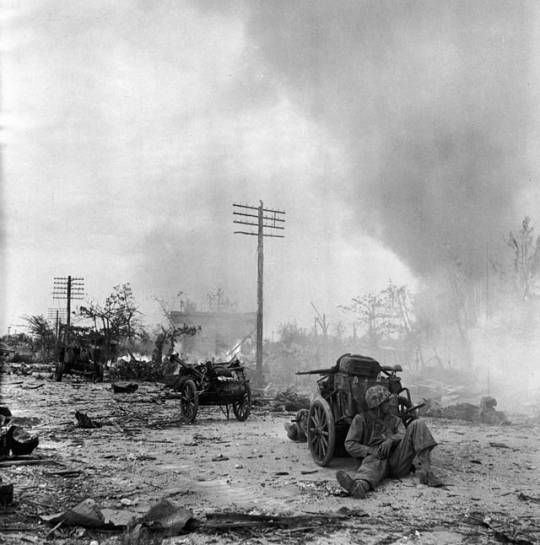
A U.S. Marine rested behind a cart on a rubble-strewn street during the battle to take Saipan from occupying Japanese forces, 1944.
1 note
·
View note
Text
Interview: Brandon Slagle
The Hollywood Reporter called him the "go-to-gore-guy." Director Brandon Slagle talks about his career in music, acting and directing. His new film, "Battle For Saipan" is out on digital and on-demand.
#BrandonSlagle #filmmaker #BattleforSaipan

View On WordPress
0 notes